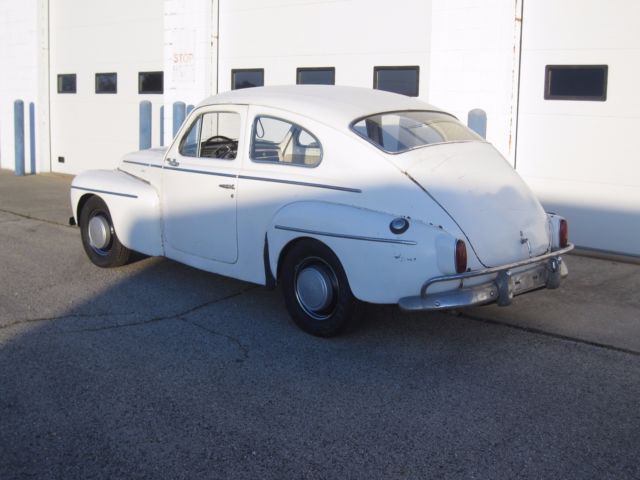Vintage Volvo PV 544 / 444 Sport SU H4 1 1/2" Dual Carbs Carburetors B16 Engine
- Price:
- Location: Rockford, Illinois, United States
- Condition: Used
- Make: Volvo
- Model: 544 , 444 , 500 , 124 , 1800
- SubModel: Sport
- Type: 2 Door Coupe
- Trim: Original Survivor Rat Rod Project
- Year: 1960
- Mileage: 49,730
- VIN: 9999999999
- Color: White
- Engine size: B16 SU H4 1 1/2" Dual Carbs Carburetors
- Number of cylinders: 4
- Fuel: Gasoline
- Transmission: 4 Speed Manual
- Drive type: RWD
- Interior color: Tan & Black
- Options: Convertible
- Vehicle Title: Clear
1960 Volvo 544 , 444 , 500 , 124 , 1800 Original Survivor Rat Rod Project Description
*** NO RESERVE *** --- AN OPENING BID CAN WIN !!!For sale is a NICE / ORIGINAL -Vintage- 1960 Volvo PV-54, 2 Door Sport Coupe... I am offering this car for sale, for a friend of mine. He and his father bought the car with the intentions of doing a " father and son " restoration project. They specifically chose to build this exact make & model, (a Volvo PV-544) as it would be an identical match to the VERY FIRST car his father owned & drove after getting his license as a child at the age of 16 years old. Together, they mutually took interest in the pursuit & purchase of a Volvo 544. During their efforts in search of a worthwhile candidate, they happened to come upon the car you see before you. An elderly gentlemen, whom had owned it for several years ( 20 plus ) had it advertised for sale. After having established contact with him, they made arrangements to view the car. It was at this time, --while seeing the car for themselves in person-- that they decided to purchased the vehicle for there joint restoration endeavor. The gentleman whom they purchased it from, informed them that the car had not left his garage where it was stored for the past 12 years due to the gas line having a leak & needing to be attended too. After getting the car home he, with his father's assistance decided to see if they might just be able to get the car started or maybe even run. They simply put a good battery in it. Then cut a small rubber hose & connected it directly to the carburetor, in place of the original stock fuel line. Put the other end of the hose in a gas can & much to their --SHEER AMAZEMENT-- the car actually started right up & roared to life when they hit the key. Furthermore, as if that wasn't enough to begin with... They were also able to immediately move the car back & forth through the gears in forward and reverse !!! --- One would ONLY believe that these virtually effortless achievements would only just propel their project & plans into HIGH GEAR..... but unfortunatel, for reasons in which are to myself unknown & were not exactly explained to me... My buddy, only ever said that his dad more or less just basically lost interest in following through with their original intentions of getting the car back on the road. As a DIRECT result, sadly enough the car has sat in my friends two car garage taking up space for the past 3 YEARS !!! ... He himself does not actually have a full knowledge of automobile restoration or required mechanical experience to proceed any further beyond the current state in which you see the car. While it sat in his garage & was unsure of what he might be able to end up doing with the car, he did purchase a BRAND NEW set of tires which are what you see still mounted on the car. Apparently they never got any further into their inspection of the prior owners claims of a fuel leak, after his dad abandoned the project.
In ALL, the car has probably not been "on the road" in close to 16 years or so. It was started, ran & drove about 3 years ago. New tires were put on 13 months ago.
MODEL OVERVIEW 0" ng-include="" src="'/apps/valuationtools/Content/partials/gallery.partial.html'" >History of the 1958-1966 Volvo PV544Volvo’s first post-war product, the 1947 PV444, looked very much like a pre-war American car—a 1942 Ford to be specific. On introduction, however, the Volvo was little dated as the 1946-48 Ford Tudors were dead ringers for the ’42s. Nevertheless, by 1949, the PV444 was already looking long in the tooth and by 1958 when the visually unchanged PV544 came out, it looked positively antique.
Although visual changes were minor (a curved one-piece screen replacing a flat split screen), under the skin, the PV544 marked the introduction of the indestructible 1.8-liter B18 five-main-bearing, twin-SU carb, four-cylinder engine and an all-synchro four-speed gearbox. A particularly rigid unibody coupled with a well-located live rear axle and decent 9-inch drum brakes made for a reasonably entertaining car that was rallied with some considerable success in period. Road & Track was able to get their test car to go 0-60 in about 14 seconds or around a half second slower than an MGB-GT. Top speed was a bit over 90 mph while 25-29 mpg was possible.
Much like the VW Beetle, there were few significant changes during the car’s production run, the biggest being a change from a six-volt to a twelve-volt electrical system in 1962. When the Swedes discontinued the car in 1965, they anticipated roughly the same reaction their Viking forbears had to an undefended monastery, even running ads calling for calm. Fortunately, Volvo owners tended more toward pacifism than Vikings. The Duett wagon body style was even more beloved of hippies from Vermont to California and actually outlived the sedan by four years.
Inside, the PV544 betrays its 1940s origins. While there’s head room aplenty, the cockpit is quite narrow and larger front seat occupants will be sitting shoulder to shoulder. In true Volvo tradition, however, the seats are first rate even by modern standards. The stock wheel is the size of a trash can lid and the ribbon speedometer takes some getting used to as does the lack of a tachometer. The customarily light-colored interiors (some two-tone) are quite pleasant and durable.
Underway, the PV544 feels anything but ponderous. Although stoutly constructed, the car’s 2100 lb. curb weight works in its favor and the car feels quite nimble and makes decent use of its 90 hp. By today’s standards, the PV544’s performance would see it blown into the weeds by a Ford Transit Connect. Nevertheless, for the day, it was considered brisk and in fact, the Volvo was over a second faster to sixty than two sports cars tested by Road & Track the same year, the Sunbeam Alpine and Triumph Spitfire.
There are few impediments to 544 ownership. The cars are dead simple to maintain, parts are readily available, and with a competent heater and ability to maintain highway speeds, PV544s can be used every day.
As usual, rust is the main bugger, although Volvos were among the better protected cars of the day. Rockers, floors, and front fenders by the headlamps are the spots to look at first. On the mechanical side, the B18 engine might as well have cylinder bores lined with diamonds. With five oversized main bearings and a generally under-stressed design, they simply never seem to wear out. Synchromesh on early PV544s can be a bit weak but this is seldom bothersome to anyone who knows how to double clutch.
From a collectability standpoint, there has generally been a modest demand for Amazons and PVs among college professor types, but widespread appeal continues to elude them. Combine that with their penchant for staying on the road, and a PV544 remains an easy-to-find and easy-to-maintain option for vintage car ownership.
">Volvo’s first post-war product, the 1947 PV444, looked very much like a pre-war American car—a 1942 Ford to be specific. On introduction, however, the Volvo was little dated as the 1946-48 Ford Tudors were dead ringers for the ’42s. Nevertheless, by 1949, the PV444 was already looking long in the tooth and by 1958 when the visually unchanged PV544 came out, it looked positively antique.
Although visual changes were minor (a curved one-piece screen replacing a flat split screen), under the skin, the PV544 marked the introduction of the indestructible 1.8-liter B18 five-main-bearing, twin-SU carb, four-cylinder engine and an all-synchro four-speed gearbox. A particularly rigid unibody coupled with a well-located live rear axle and decent 9-inch drum brakes made for a reasonably entertaining car that was rallied with some considerable success in period. Road & Track was able to get their test car to go 0-60 in about 14 seconds or around a half second slower than an MGB-GT. Top speed was a bit over 90 mph while 25-29 mpg was possible.
Much like the VW Beetle, there were few significant changes during the car’s production run, the biggest being a change from a six-volt to a twelve-volt electrical system in 1962. When the Swedes discontinued the car in 1965, they anticipated roughly the same reaction their Viking forbears had to an undefended monastery, even running ads calling for calm. Fortunately, Volvo owners tended more toward pacifism than Vikings. The Duett wagon body style was even more beloved of hippies from Vermont to California and actually outlived the sedan by four years.
Inside, the PV544 betrays its 1940s origins. While there’s head room aplenty, the cockpit is quite narrow and larger front seat occupants will be sitting shoulder to shoulder. In true Volvo tradition, however, the seats are first rate even by modern standards. The stock wheel is the size of a trash can lid and the ribbon speedometer takes some getting used to as does the lack of a tachometer. The customarily light-colored interiors (some two-tone) are quite pleasant and durable.
Underway, the PV544 feels anything but ponderous. Although stoutly constructed, the car’s 2100 lb. curb weight works in its favor and the car feels quite nimble and makes decent use of its 90 hp. By today’s standards, the PV544’s performance would see it blown into the weeds by a Ford Transit Connect. Nevertheless, for the day, it was considered brisk and in fact, the Volvo was over a second faster to sixty than two sports cars tested by Road & Track the same year, the Sunbeam Alpine and Triumph Spitfire.
There are few impediments to 544 ownership. The cars are dead simple to maintain, parts are readily available, and with a competent heater and ability to maintain highway speeds, PV544s can be used every day.
As usual, rust is the main bugger, although Volvos were among the better protected cars of the day. Rockers, floors, and front fenders by the headlamps are the spots to look at first. On the mechanical side, the B18 engine might as well have cylinder bores lined with diamonds. With five oversized main bearings and a generally under-stressed design, they simply never seem to wear out. Synchromesh on early PV544s can be a bit weak but this is seldom bothersome to anyone who knows how to double clutch.
From a collectability standpoint, there has generally been a modest demand for Amazons and PVs among college professor types, but widespread appeal continues to elude them. Combine that with their penchant for staying on the road, and a PV544 remains an easy-to-find and easy-to-maintain option for vintage car ownership.
Due to the vehicles current state & the extent of time in which it has been stored, we are forced to offer this car for sale "AS-IS" & / or for Parts-or-Repair purposes only. Winning bidder is responsible for any & all transportation fees associated with its purchase. Since this vehicle is being offered for "local" pick-up only, ( either ) a cash payment upon arrival or bank-to-bank wire transfer are the only 2 forms of payment in which will be accepted. Please address any questions or concerns prior to the end of the auction. Lastly but not least, the vehicle title has become missed placed over time, but is clean, clear & just needs to simply be applied for.
 1960 Volvo and parts PV 544/ B16 engine. Many extra parts including 5 dual carbs
1960 Volvo and parts PV 544/ B16 engine. Many extra parts including 5 dual carbs
Mileage: 23500
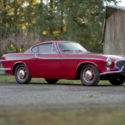 1964 Volvo 1800 No Reserve Original Engine & Carbs, OD Shifts Smoothly
1964 Volvo 1800 No Reserve Original Engine & Carbs, OD Shifts Smoothly
Mileage: 150,000
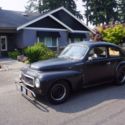 VOLVO PV544 SPORT: Rare Factory B-18 DUAL Carb + 4-Speed NO RESERVE- Bid to WIN!
VOLVO PV544 SPORT: Rare Factory B-18 DUAL Carb + 4-Speed NO RESERVE- Bid to WIN!
Mileage: 8,400
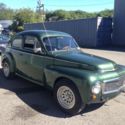 VOLVO 544 SPORT with B-20 ENGINE
VOLVO 544 SPORT with B-20 ENGINE
Mileage: 99,999
 VOLVO PV544 Sport RARE HP Factory 18-B DUAL Carburator 1788cc + Factory 4-Speed
VOLVO PV544 Sport RARE HP Factory 18-B DUAL Carburator 1788cc + Factory 4-Speed
Mileage: 8,400
 Vintage 1989 Volvo 240 with new engine, brakes and more
Vintage 1989 Volvo 240 with new engine, brakes and more
Mileage: 161,000
 Volvo 544 Sport 1965 Original owner. Rebuilt engine in 2016
Volvo 544 Sport 1965 Original owner. Rebuilt engine in 2016
Mileage: 82,000
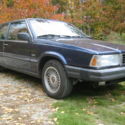 1989 Volvo 780 Bertone coupe Turbocharged B230F four cylinder volvo engine
1989 Volvo 780 Bertone coupe Turbocharged B230F four cylinder volvo engine
Mileage: 158,000
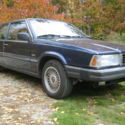 1989 Volvo 780 Bertone coupe Turbocharged B230FT four cylinder volvo engine
1989 Volvo 780 Bertone coupe Turbocharged B230FT four cylinder volvo engine
Mileage: 158,000
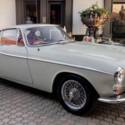 1964 volvo p1800s volvo saint vintage 1964 sports
1964 volvo p1800s volvo saint vintage 1964 sports
Mileage: 87,068









